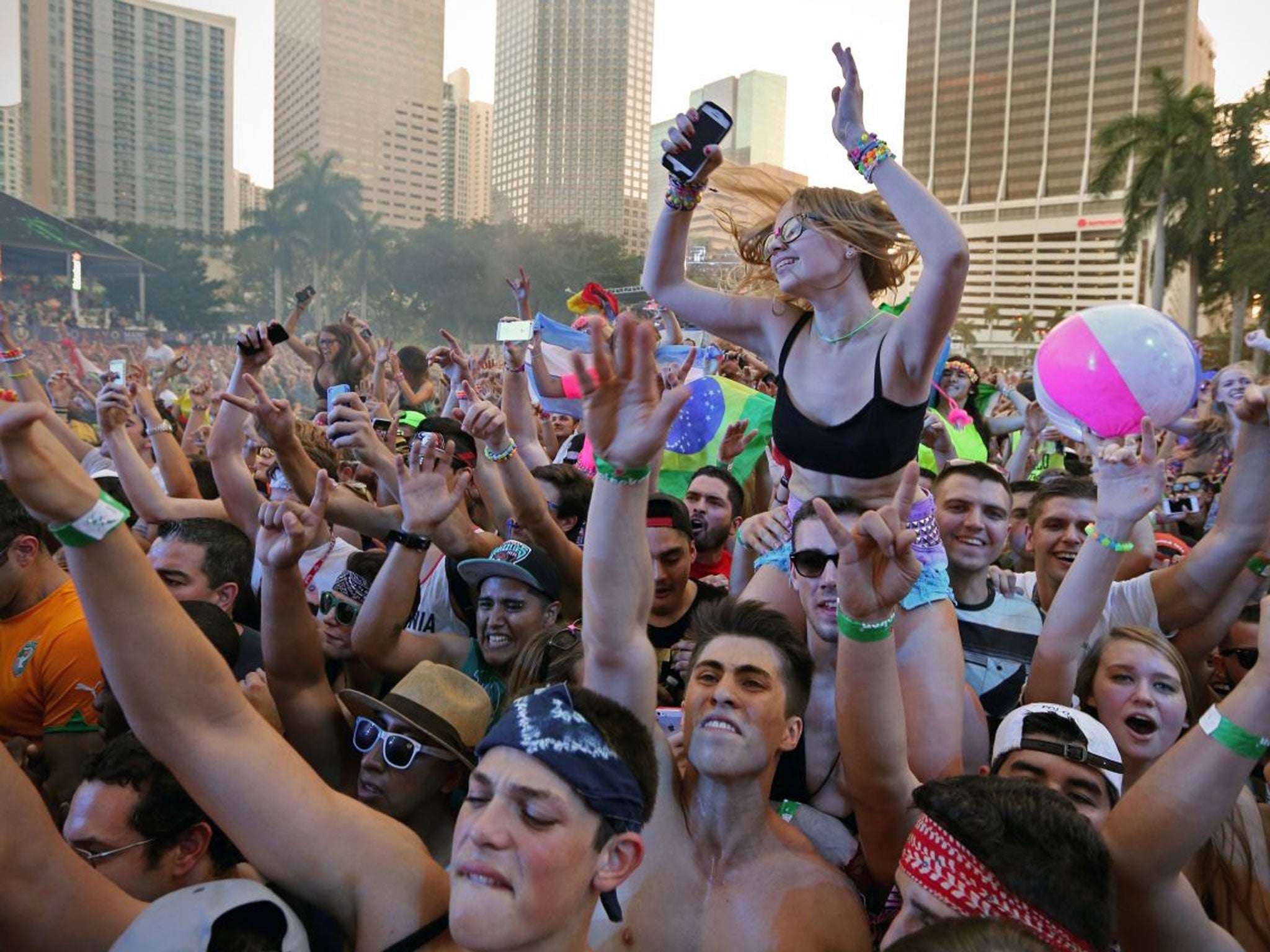Downtown Miami feels every beat: Ultra festival 2013
You've never heard of it – but dance music festival Ultra drew 330,000 revellers last week. Arielle Castillo reports on a new American passion

Your support helps us to tell the story
From reproductive rights to climate change to Big Tech, The Independent is on the ground when the story is developing. Whether it's investigating the financials of Elon Musk's pro-Trump PAC or producing our latest documentary, 'The A Word', which shines a light on the American women fighting for reproductive rights, we know how important it is to parse out the facts from the messaging.
At such a critical moment in US history, we need reporters on the ground. Your donation allows us to keep sending journalists to speak to both sides of the story.
The Independent is trusted by Americans across the entire political spectrum. And unlike many other quality news outlets, we choose not to lock Americans out of our reporting and analysis with paywalls. We believe quality journalism should be available to everyone, paid for by those who can afford it.
Your support makes all the difference.If there's any proof that electronic dance music has once again bubbled over into the mainstream in the US, it's the explosive rise of the annual Ultra Music Festival in Miami. What started as a home-grown, one-day beach rave in the spring of 1999 exploded in size over the ensuing decade and a half into this year's behemoth.
The 2013 edition featured two, separate three-day festivals, from March 15-17 and from March 22-24, billing many of the same major acts but promising “two unique experiences.” And rather than seeing it as overkill, the festival's international following of fans reacted by opening their wallets en masse. Both weekends completely sold out, welcoming more than 167,000 revellers each time to waterfront Bayfront Park, in the heart of downtown Miami.
The experience of attending the country's largest dance-music festival was well worth it as a way to chart the beginnings, crests, and deaths of major trends in the scene. If nothing else, Ultra confirmed that “EDM”, the term the American media uses for fairly mainstream dance music, is now big business.
The festival's main stage – one of seven separate areas for music – featured a roster that looked like a who's who of the Billboard charts. Producers and DJs such as Calvin Harris, Avicii, David Guetta, and Tiesto all pumped out sets consisting largely of their own hits, either written for their own albums or produced for other artists hoping for a fresh sound infusion. In fact, the performances at the main stage often sounded less like the long musical journeys to which seasoned clubbers are accustomed, and more like seamless pop-singalong medleys.
Some of these chart titans, however, seemed fatigued by their own role. Avicii, the Swedish wunderkind responsible for the inescapable, Etta James-sampling song “Levels,” made a complete departure during his main stage set this past Friday night. Halfway through his traditional set, he suddenly began to play country instead, even inviting out a live band to perform with him. Bemused, some in the crowd booed.
Then, on Saturday night, the Canadian producer Joel Zimmerman, who performs as Deadmau5, also refused to take listeners down the easy route. Instead of cranking out his more boisterous electro-house hits, he seemed intent on taking things ever so slightly back to the traditional DJ's emotional narrative. There were moody, dark downtempo passages and stretched-out melodies that sounded bittersweet.
Sunday, of course, marked the end of an era for contemporary dance music when the trio of producers known as Swedish House Mafia performed their purported last-ever show. Producers Sebastian Ingrosso, Axwell, and Steve Angello all plan to make music as part of their solo careers, but they sent their five-year project out with a literal bang. Fireworks and pyrotechnics punctuated the bombastic set. That they chose to go out in style at Ultra was also telling.
At the same time, the action at other stages hinted at shifting tides of taste in other dance music genres. This past Saturday, the “Dropzone” tent featured a line-up of artists from the American iteration of dubstep, heavy on loud, grinding bass lines and low on subtlety. The musical selection here sounded even more repetitive in years past, the crowd enthusiastic but skewing young, and heavily swathed in fraternity logo vests.
The early adopters, meanwhile, had all shifted to the Trapped stage, where forward-thinking DJs like Miami native Craze, duo Nadastrom, and Dillon Francis all cranked the new sound of “trap.” Marrying low-end bass with stuttering rap samples and sound effects, it's an appealingly aggressive form of electronic music that's still somewhat more sanitised than the Southern US rap from which it derives some influence.
On Sunday night artists like Lee Foss, Seth Troxler, Art Department, and Damian Lazarus blended new minimal techno, vintage acid house, and anything else with an appropriately robotic, yet soulful, thump.
One more cameo appearance solidified Ultra's reputation as a potential career reviver. Last year, Madonna took the main stage for a guest appearance with Avicii, infamously making a reference to “Molly,” the American slang term for MDMA pills. This year, another celebrity of a similar age also showed up.
Guitar-god Slash climbed the speakers during Dutch DJ Chuckie's main-stage set for an impromptu solo. This musical aside served, perhaps, as a symbolic nod to commercial dance music's replacement of arena rock on the charts, and its potential role as its saviour. It turns out that Slash, on a forthcoming collaborative track with Chuckie, is also going dance. Call Ultra Music Festival, then, the music industry's new fountain of youth.
Join our commenting forum
Join thought-provoking conversations, follow other Independent readers and see their replies
Comments